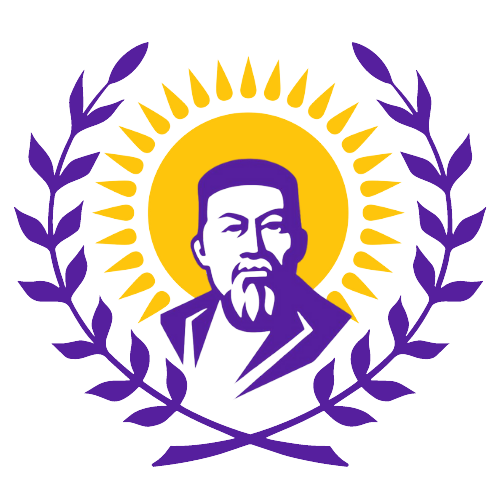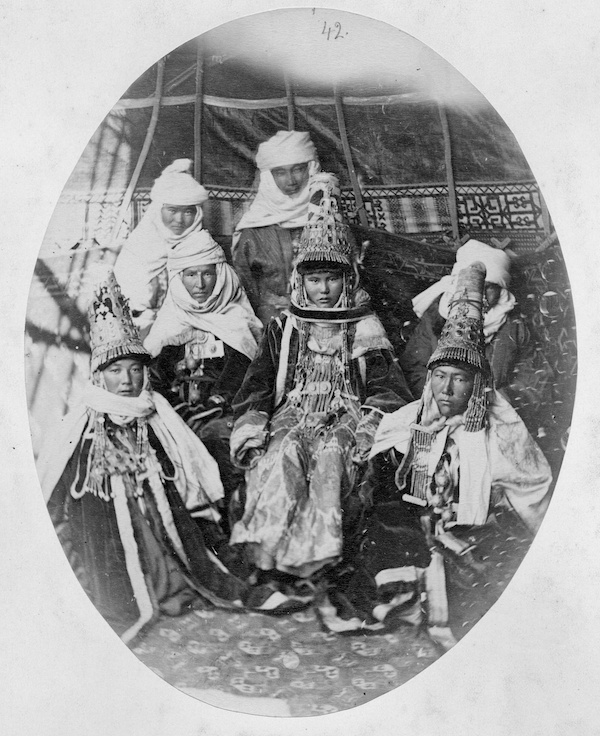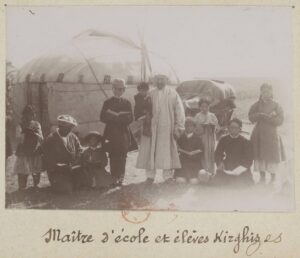For centuries, a Kazakh woman stood at the center of the family, taking care of homes, children, elderly and even leading the kin group. A married woman took an active part in solving all affairs and was the head of the family when her husband was absent during long seasonal migrations. The wife’s opinion played a decisive role in solving issues related to the upbringing of children and housekeeping. As a rule, wives were younger than their husbands and often became full-fledged housewives during the lifetime of their elderly husbands. Eyewitness accounts of the important role of Kazakh women in nomadic households date back to the 13th century. One of the first European travelers, the Italian Franciscan monk Giovanni de Plano Carpini, who traveled across the expanses of the Mongol Empire, left us the following lines:
“The men do nothing but occupy themselves with their arrows and to a small extent look after their herds; for the rest they go hunting and practice archery….Both men and women stayin the saddle for a long time….All the work rests on the shoulders of the women; they make the fur coats, clothes, shoes, bootlegs and everything else made from leather. They also drive the carts and mend them, load the camels, and are very quick and efficient in all their work. All the women wear trousers, and some of them shoot with the bow as accurately as the men”.1
Russian political figure A. И. Levshin, who visited the Kazakh steppes in the first half of the XIX century seemed to support the previous account:
“The women of the Kazakh people for many reasons should be preferred to the men. Kazakh women are far superior to Kazakh men in labor. They do all the household, they take care of half of the cattle, they also do handicrafts and prepare clothes for themselves and children, and they must take care of everything their husbands need, even saddle their horses and put them on horseback sometimes”.
Women did everything: set up yurts, cooked food, received guests, took care of the house and children. A widowed man had to find a new wife as quickly as possible, because without a woman, a household and family life stopped.

Wives of Biys (Judges) (Seidlitz, 1883)
Unlike sedentary peoples, nomadic women had much freedom of behavior, and in everyday life they did not cover their faces and were not in seclusion, according to Sharia norms. With due respect for men and the elderly, Kazakh women nevertheless could openly express their opinions and communicate freely. Personal freedom was also characteristic of unmarried girls. Since childhood, girls were taught to be strong and agile in the saddle; every girl had to be able to stand up for herself by showing physical endurance in competitions and resourcefulness in musical and verbal competitions with young men; girls participated in horse races bәyge (бәйге) equally with boys, and in horse races kyz kuu (қыз қуу) – “catch up with a girl” they were the main heroines. This echoes of the legendary female warriors “Amazons” with their cult of dexterity, strength and daring.

Kazakh girls (Semipalatinsk region, S. M. Dudin, 1899)
At the same time, traditions required a girl to prepare for marriage and housekeeping by instilling in her the norms of behavior of a dignified woman, to collect the worthy dowry, which was a status symbol for the girl’s family. By the way, it was the bride’s family that prepared the wedding headdress – saukele (сəукеле). The bride’s headdress was decorated with gold plaques, pearls and precious stones. A wedding was a unique event in a woman’s life when she could wear such a variety of jewelry at the same time. Each of which symbolized a wish for prosperity, many children, wealth and longevity in the future family life. The wedding headdress, as well as some of the girl’s personal jewelry, were her personal property and, unlike the rest of the dowry, did not pass into the possession of her husband.

Arrival of the bride to the groom’s family (Semirechensk region, K. N. de Lazari, 1898)
The birth of the first child was a kind of exam which tests the readiness of a young daughter-in-law to become a mother of numerous offspring, as it was the guarantee of the family’s survival. The transition to a mother was accompanied by a change of headdress: a young mother wore a female headdress consisting of the lower part – a veil and the upper part – a turban. At the beginning of the 19th century such headdresses were made only of white cloth.

Child in the cradle (Semipalatinsk region, S. M. Dudin, 1899)
In North-Western Kazakhstan the under-veil was a folded triangular square cloth which was thrown over the head by crossing the ends on the chest or throwing them over the shoulders. In the rest of Kazakhstan kimeshek (кимешек), a deaf hood with a cutout for the face, which covered the shoulders, chest and descended at an angle down the back, served as a lower garment. The details and decorations of the kimeshek varied depending on a woman’s age. Young women were richly decorated with embroidery, corals, silver plaques and pearls.

Home dress of a married Kazakh woman (Semipalatinsk region, S. M. Dudin, 1899)
The older she became, the more social weight the woman acquired. She gradually moved into the group of older women, brought up young daughters-in-law, headed the ritual life of the family connected with maternity, child and wedding ceremonies. She was entrusted with a lot of custodies: maintaining family ties, the ability to receive guests with dignity, maintaining etiquette. Women who had earned recognition and respect in the society became the head of the family after the death of their husbands. Thus, there was a change of responsibilities from the women category of “home” to the men counterpart of “clan”.
In general, Kazakh society was organized in clans. The custom of amengerlik (əмеңгерлiк) prescribed a woman who had lost her spouse to marry his brother. This custom reflected not only the norms of marriage, but also the order of inheritance of property, which consisted in the transfer of inheritance not to the son, but to the brother of the deceased. If a widow did not remarry, she became a temporary administrator of her husband’s property until her sons came of age and was under the close supervision of the deceased’s relatives. In any case, both the children of the deceased and his property belonged to the family kin group of the deceased.

Wealthy Kazakh woman with children (Semipalatinsk region, S. M. Dudin, 1899)
Of importance are family rituals, where the role of a woman found its key expression. For example, at the beginning of the twentieth century, there was a custom called bet zhyrtu (бет жырту) according to which a widow had to scratch her face, hands and chest while mourning her husband. For the soul of the deceased to safely reach the other world, the widow had to perform all necessary ritual actions, otherwise, if the ritual was performed incorrectly, the family would face further death. Thus, the well-being of both the living family members and the dead depended on the behavior of the widow. After the completion of the annual memorial cycle, the husband’s soul became aruak (аруақ), i.e. passed into the category of mythological ancestors of the family. And only a woman remained in constant interrelation with the world of spirits and with the world of the living. She was responsible to bring a human being soul into this world and take it away at the end of life’s journey.
In the traditional system of Kazakh perceptions and values, life and welfare of the whole family depended on the behavior of a woman – mother, widow, wife – on how she observes a number of injunctions and prohibitions. A woman brought a man into this world; she also accompanied the soul of the deceased to the other world. It was the wife who mourned her deceased spouse, laments over the body and then over the ritual substitute of her spouse – tul (түл). Women’s lamentations zhoktau (жоқтау) differ from men’s lamentations, they express not only emotions and grief from the loss of a spouse, but also retell the events of the life of the deceased.

Headdress of an elderly woman (Semipalatinsk region, S. M. Dudin, 1899)
Throughout her life, a woman accompanies her children and is a caring mother, she is her husband’s counselor and administrator, who bore all the burdens of daily household chores of a large family, and it was the devoted wife who saw the deceased spouse off to the next world. With age the social status of women in Kazakh society only elevated. Thus, from the informal head of the family, she could become the head of the “family clan.”

Married woman in a festive dress (Kyzyl-Kum Desert, Jizzakh district, V.D. Pelts, 1914)
All images are reproduced here with a written permission of the Peter the Great Museum of Anthropology and Ethnography (the Kunstkamera). No further reproduction by third parties is possible without proper authorization from the museum.
- Thomas J. Barfield. Nomadic Perspectives. New Jersey, 1993, p. 146 ↩






